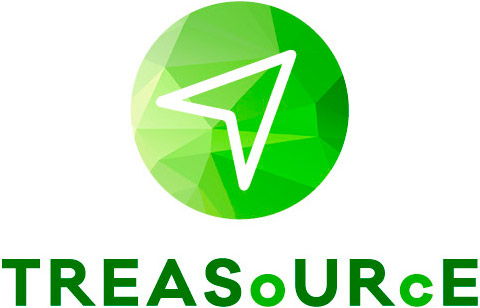The core of building an ecosystem is the willingness to solve a problem, which no actor alone can solve. The needs and challenges can emerge from the customer or are identified as crucial in the market. Customer can be either a business or a citizen. Involving the stakeholders in the development process increases their engagement. This is one of the core concepts of TREASoURcE.
To build an ecosystem, one starts with a network of actors trying to solve similar kinds of challenges. In the center of said network, there is a need for an operator that gathers the other actors together. Ecosystem is formed of interconnecting value chains. Value chain is the route that raw material makes to form a product. Innovation ecosystems are another type of ecosystem, in which one of the shared values is the information gathered between stakeholders to develop new ideas.
The benefits outweigh the risks
What is the value of belonging to an ecosystem for an individual company? The answer is quite simple. There are resources and information that aren’t available outside the ecosystem. To have access to these resources, a company needs to be part of the ecosystem and thus share its own resources.
But the benefits often outweigh the risks of sharing. Indeed, to be part of an ecosystem provides the company with an opportunity to find new possibilities for their own waste or side streams that they wouldn’t find without the shared knowledge. In TREASoURcE, one of the developed systemic circular economy solutions contains the development of an ecosystem for an e-marketplace for agricultural side streams. The marketplace will connect the sellers and buyers of these side streams together and thus optimize the re-use of currently underutilized or unused side streams.
Regional examples
TREASoURcE supports the formation of local ecosystems that are based on identifying the key value chains in selected streams. For example, in the Tampere Region in Finland and in Viken County in Norway, demo areas for the circulation of used car batteries will be introduced and tested. These ecosystem formations will be replicated in the Baltic Sea Region in later phases of the project.
Another example of a local circular economy ecosystem in Finland is in the Helsinki-Uusimaa Region. The Circular Economy Valley has been formed to increase the circulation of construction materials, plastic and textiles, food and e-waste. These are the key value chains that have been identified as the core of the systemic change from linear to circular economy in the area. The open ecosystem plays a key role also in this case.
Systemic change requires broad collaboration
It is important for circular economy ecosystems to share information and learn from each other to create a sustainable future and develop new possibilities. To achieve this, it is essential to learn from more established ecosystems and build on past projects. This requires connecting the ecosystems to each other.
In the heart of TREASoURcE is the concept of stakeholder engagement. This means involving different kinds of stakeholders in the development process from the beginning. One of the aims of the project is to increase the awareness of different stakeholders, like the citizens and communities, and make it more acceptable to use second hand or recycled materials in products. Thus, the citizens are in the core of the ecosystem as well. The stakeholder involvement in ecosystem building requires nowadays even wider approach than just reaching citizens, as mostly EU financed ecosystem projects now work with quadruple helix stakeholders (science, policy, industry, and society).
21.03.2023 | Nina Hurme (CLIC), nina.hurme@clicinnovation.fi
